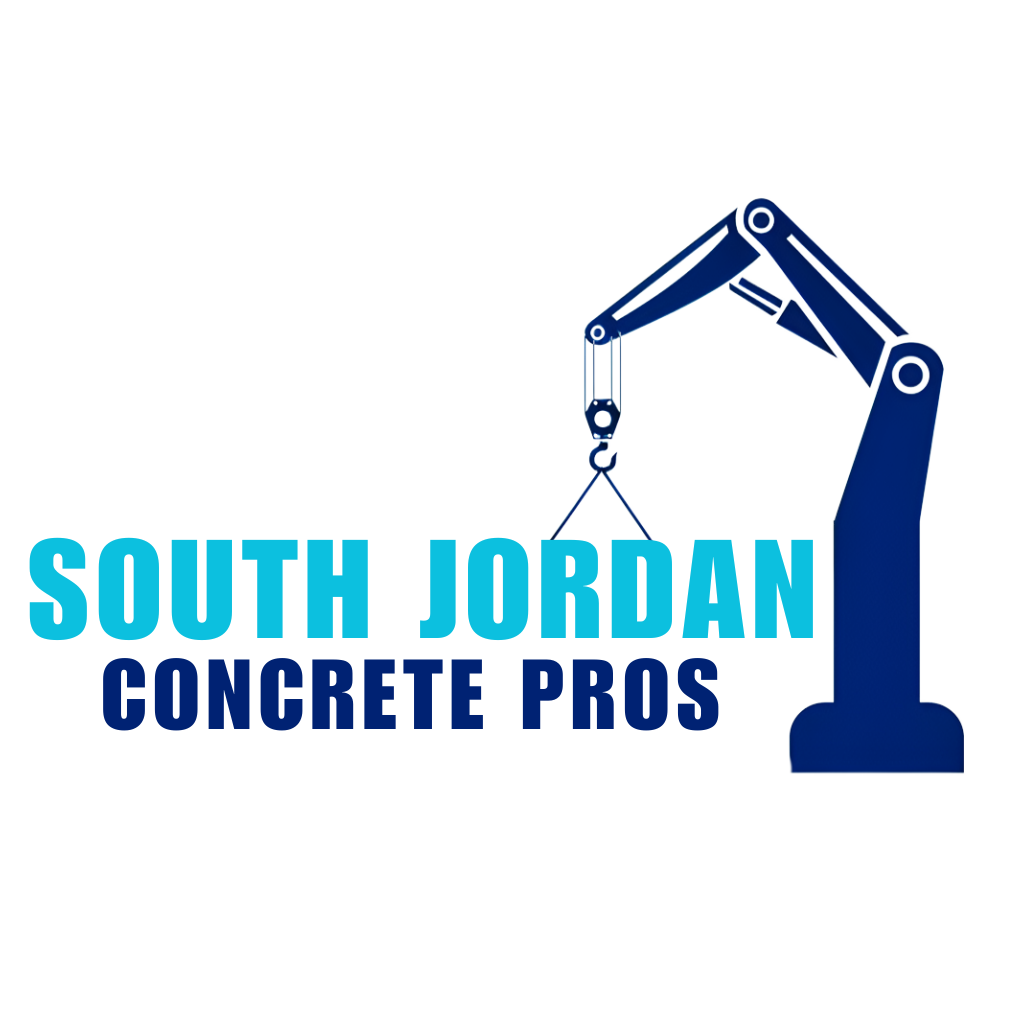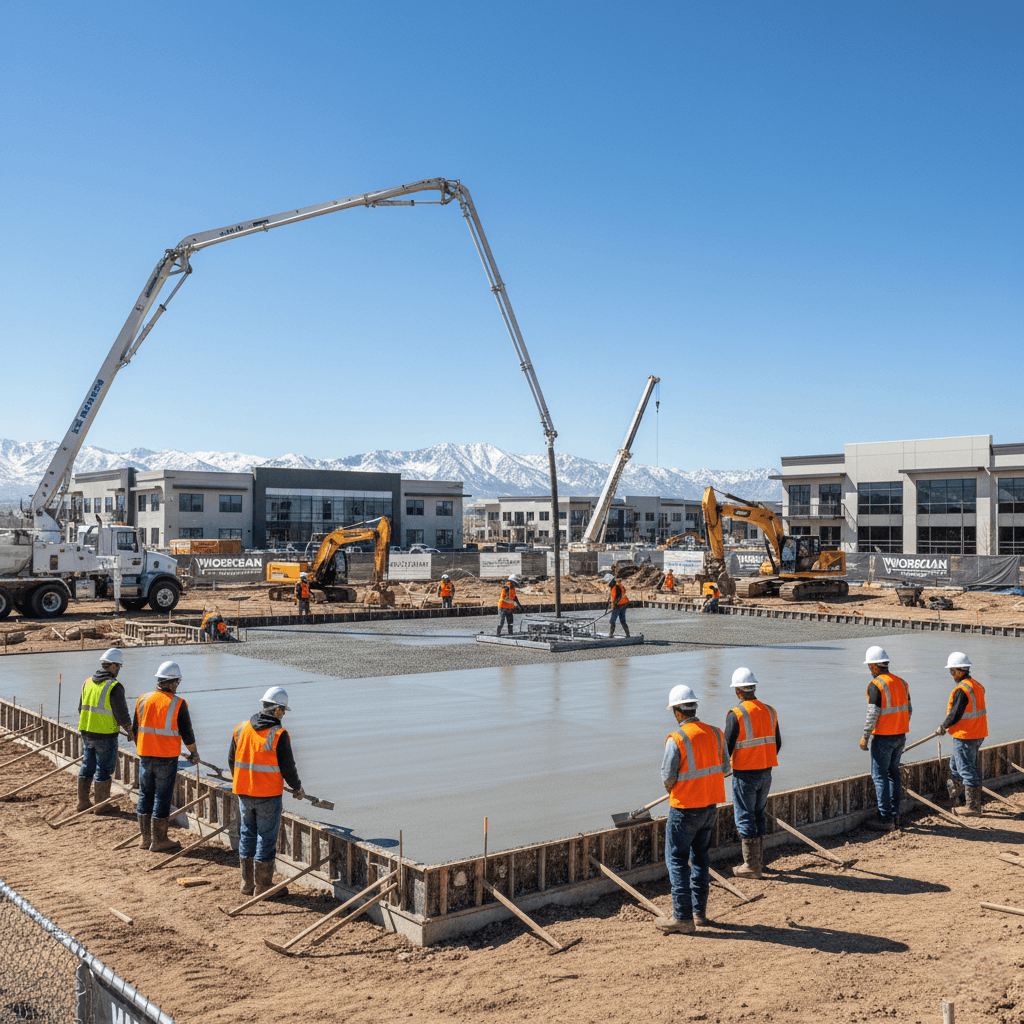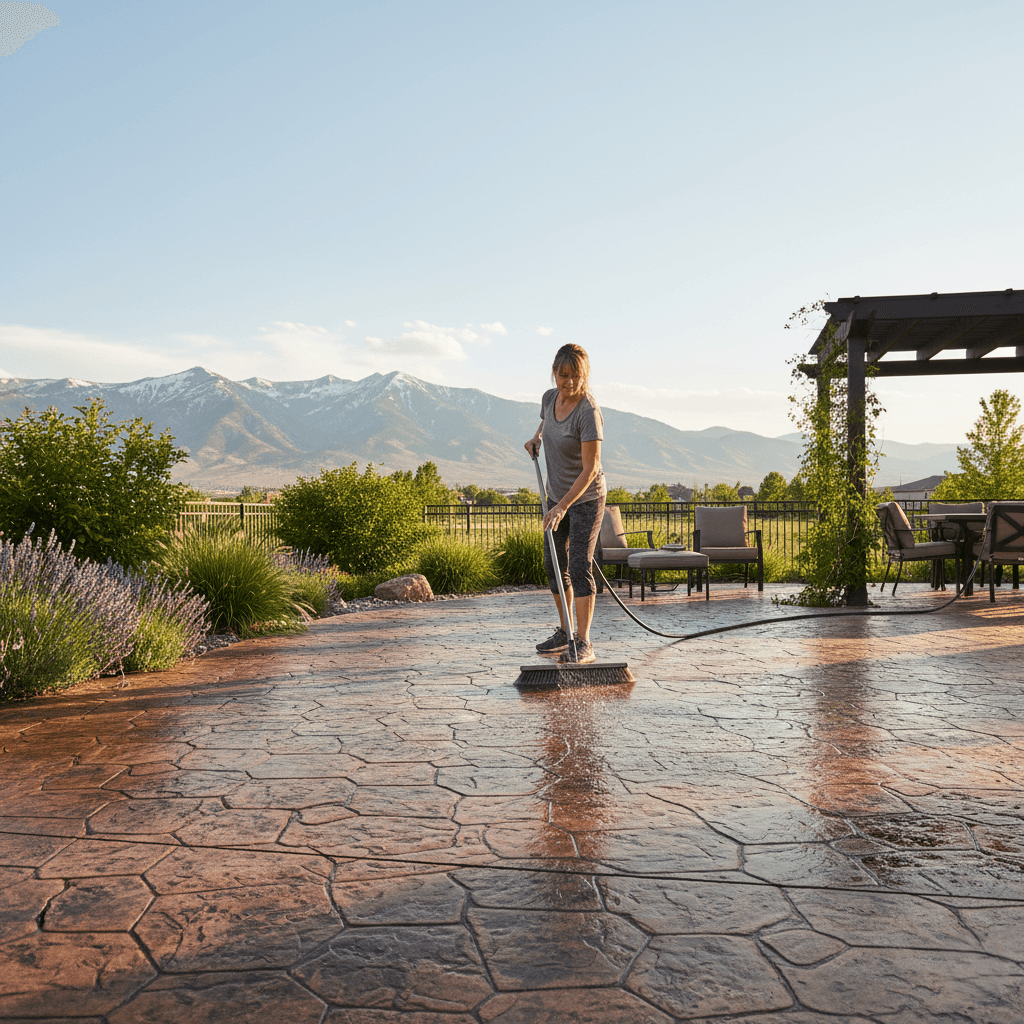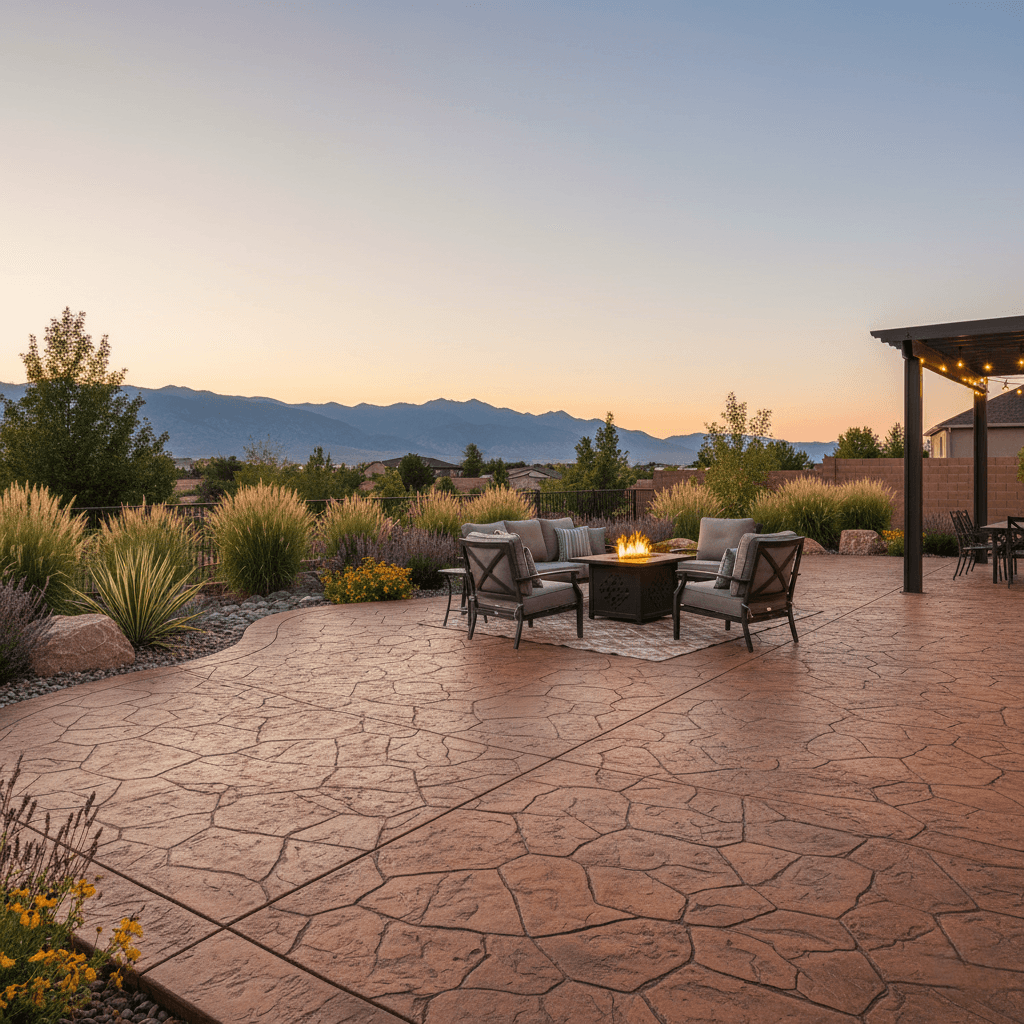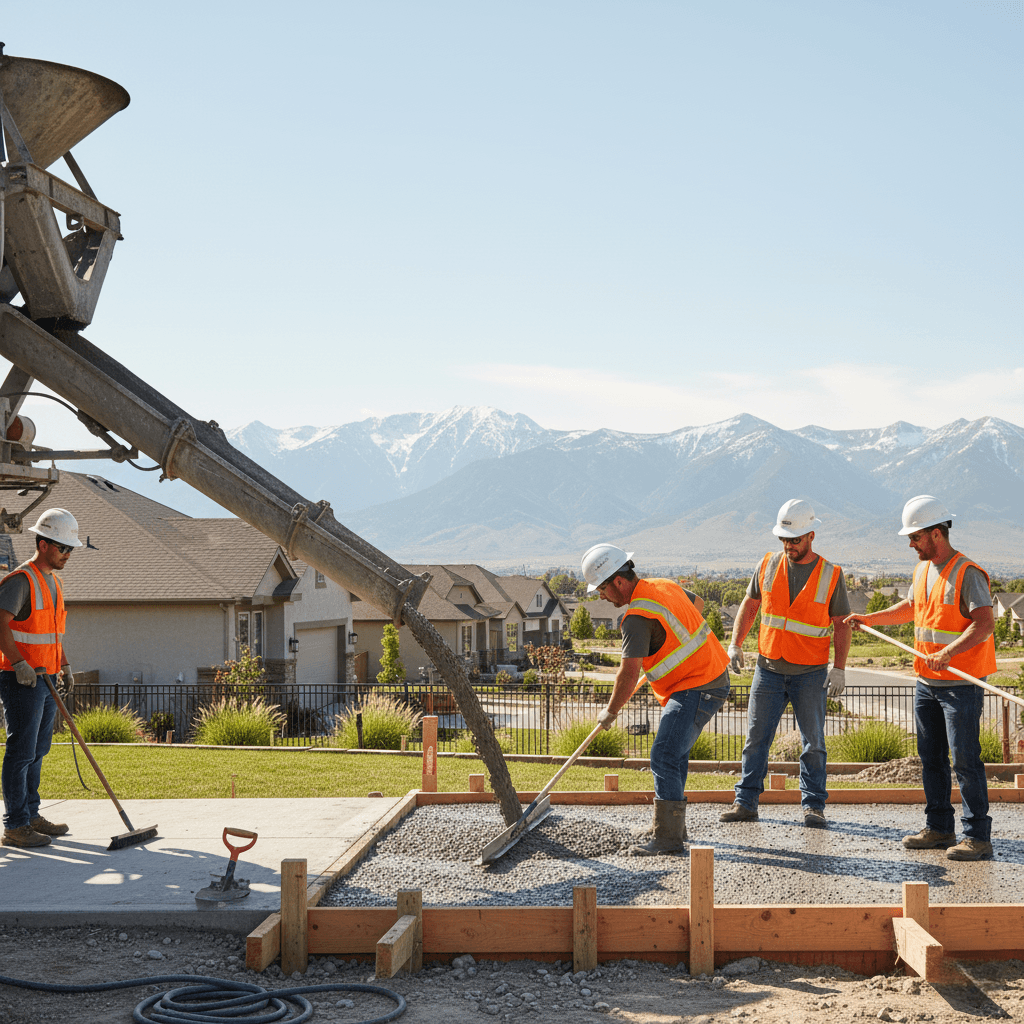
Concrete Resurfacing or Replacement in South Jordan
Concrete Resurfacing South Jordan
Homeowners facing concrete deterioration often struggle with deciding between concrete resurfacing and complete replacement for their driveways, patios, and walkways. Understanding the key differences helps make informed decisions that balance cost considerations with long-term performance expectations. Professional assessment determines whether the existing concrete provides an adequate structural foundation for resurfacing applications. Furthermore, South Jordan’s climate conditions significantly influence the effectiveness and longevity of both approaches. The right choice depends on the extent of damage, budget constraints, and homeowner expectations for durability and appearance.
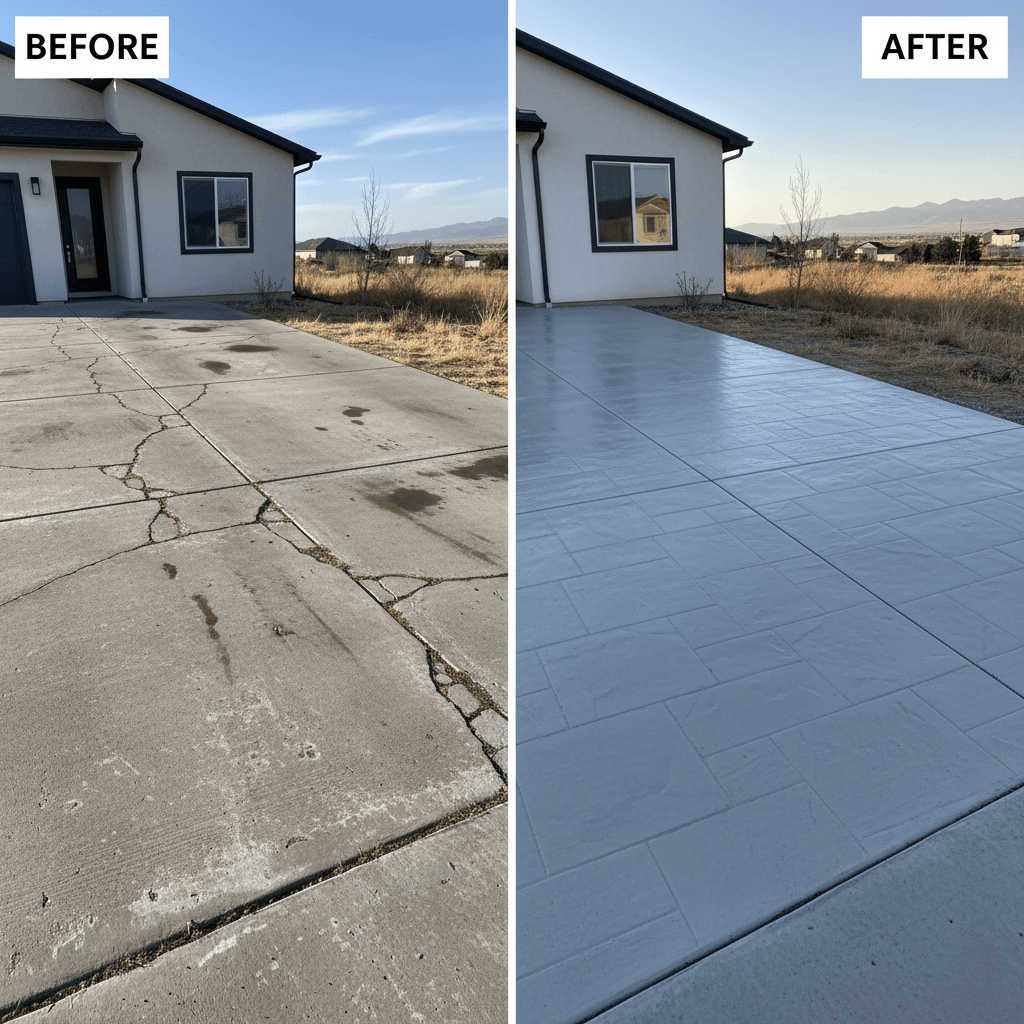
Understanding Concrete Resurfacing
Concrete resurfacing applies a thin overlay system over existing concrete surfaces to restore appearance and functionality without complete demolition. This process typically costs $3 to $7 per square foot in the Salt Lake City area, making it significantly more affordable than replacement options. The technique works best on structurally sound concrete with minor surface damage, including small cracks, scaling, or aesthetic wear. Professional contractors use specialized bonding agents and overlay materials designed to adhere properly to prepared existing surfaces.
Ideal Candidates for Resurfacing
Properties throughout South Jordan with concrete showing hairline cracks, surface spalling, or discoloration often benefit from resurfacing solutions. The existing slab must maintain structural integrity without major settling, heaving, or deep crack formation. Additionally, concrete older than 5 years but less than 20 years typically provides suitable foundation conditions for successful overlay applications.
When Concrete Replacement Becomes Necessary
Complete concrete replacement involves removing existing material and installing new slabs with proper reinforcement and foundation preparation. Replacement costs typically range from $6 to $15 per square foot, depending on thickness requirements and decorative options. This approach becomes essential when structural integrity is compromised through extensive cracking, significant settling, or foundation failure. Properties near areas like Daybreak or Conservation Garden Park experiencing soil movement may require replacement rather than surface treatments.
Signs That Indicate Replacement Needs
Large cracks exceeding 1/4 inch in width, concrete sinking or heaving more than 2 inches, and widespread crumbling indicate structural problems requiring replacement. Additionally, concrete installations older than 25 years with multiple previous repair attempts often benefit from complete renewal. Severe freeze-thaw damage throughout Utah winters can compromise concrete integrity beyond surface-level repair capabilities.
Cost Comparison Analysis
Concrete resurfacing provides substantial cost savings compared to replacement, typically offering 40-60% lower project expenses for comparable square footage. A standard 400-square-foot driveway costs approximately $1,200 to $2,800 for resurfacing versus $2,400 to $6,000 for complete replacement. However, replacement projects often include improved drainage, updated reinforcement, and longer warranty periods that enhance overall value propositions.
Durability and Longevity Considerations
Professional concrete resurfacing typically lasts 8 to 15 years with proper maintenance, while complete replacement installations can perform effectively for 20 to 30 years or longer. Climate factors in South Jordan, including temperature fluctuations and occasional severe weather, affect both options differently. Resurfaced concrete requires periodic resealing and careful maintenance to prevent moisture infiltration that could compromise the overlay bond.
Performance Expectations
Replacement projects provide superior long-term performance for high-traffic areas and heavy-use applications like RV parking or commercial access. Resurfacing works well for standard residential driveways, patios, and walkways with moderate use patterns. Properties throughout South Jordan’s neighborhoods benefit from honest assessments of expected usage and performance requirements.
Climate-Specific Factors for South Jordan
Utah’s freeze-thaw cycles present unique challenges for both resurfacing and replacement projects. Proper drainage design becomes critical for preventing moisture infiltration that leads to winter damage. Resurfaced concrete requires high-quality sealers and regular maintenance to withstand South Jordan’s elevation-related temperature variations throughout the year.
Assessment and Decision Framework
Professional evaluation considers multiple factors, including crack width and depth, surface condition, structural soundness, and underlying foundation stability. Experienced contractors examine drainage patterns, soil conditions, and previous repair history to recommend appropriate solutions. Properties near South Jordan City Park or surrounding established neighborhoods often present different challenges than newer developments.
Professional Inspection Benefits
Qualified contractors use specialized tools and experience to identify hidden problems that affect resurfacing success rates. They assess concrete strength, moisture content, and bond potential to ensure appropriate treatment recommendations. Furthermore, professional evaluation helps avoid costly mistakes from choosing unsuitable approaches for specific conditions.
Timeline and Installation Differences
Concrete resurfacing projects are typically complete within 1-2 days for standard residential applications, while replacement projects require 3-5 days, including demolition and curing time. Resurfacing offers minimal disruption to daily routines and property access. However, replacement projects provide opportunities to address drainage issues, update utility connections, or modify layouts during reconstruction.
Decorative Options and Customization
Both approaches offer extensive decorative possibilities, including stamped patterns, integral coloring, and textured finishes. Resurfacing allows homeowners to completely change the existing concrete appearance through overlay techniques and surface treatments. Replacement projects provide greater design flexibility, including thickness variations, integrated features, and comprehensive layout modifications that enhance property functionality.
Maintenance Requirements
Resurfaced concrete requires more frequent attention, including annual cleaning and resealing every 2-3 years to maintain optimal performance. Replacement installations need basic maintenance, including periodic sealing and crack monitoring, but generally require less intensive care. Both options benefit from prompt attention to minor issues before they develop into major problems.
Environmental and Disposal Considerations
Concrete resurfacing generates minimal waste since existing material remains in place, making it environmentally preferable when structurally viable. Replacement projects create substantial debris requiring proper disposal, though concrete can often be recycled for aggregate applications. Local South Jordan regulations may affect disposal options and associated costs for replacement projects.
Making the Right Choice
The decision between resurfacing and replacement depends primarily on structural condition, budget availability, and long-term property plans. Homeowners planning to remain in properties for less than 10 years may find resurfacing more cost-effective. Those investing in long-term residence or dealing with significant structural issues often benefit from replacement approaches despite higher initial costs.
South Jordan Concrete Pros provides comprehensive evaluation services to help homeowners make informed decisions about concrete resurfacing versus replacement options. Our experienced team assesses structural conditions, evaluates cost-benefit ratios, and recommends solutions that maximize value while meeting specific property needs and budget requirements throughout the South Jordan area.
